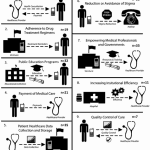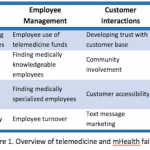Curing Pilot-itis for mHealth
Pilotitis [pahy-luht-ahy-tis] – the inability to break out of pilot stage.
The term, a coinage which has found widespread use the past few years, was frequently heard at the GSMA mHealth Summit in South Africa at the end of May 2012, when organisations and international development leaders spoke about how the difficulty in taking projects beyond the pilot stage was holding back mobile health in low- and middle-income countries.
The solution? Build for scale and sustainability from the start.
Fast forward four years, and we return to South Africa for the annual International AIDS Conference (July 18-22) where we are launching a bot for Messenger for the South African National Department of Health’s MomConnect maternal health platform.
Scale? The Messenger platform already has 900 million users worldwide, and since Facebook opened the platform to bots and services in April, more than 11,000 bots have been added to the platform. Through the advent of Messenger and bots, messaging platforms have rapidly increased their potential to reach users with life-changing content.
Sustainability? Our new bot will provide mothers a more affordable, engaging way to access the stage-based messages currently provided by our technology’s SMS services, and Messenger allows for more generous character limits than SMS, with none of the time-outs of USSD. Users send 60 billion messages per day using Messenger – more than three times the global daily SMS volume.
But scale and sustainability are not just relevant to the technology. The concepts also apply to users and content. In order to plan for scalability and universal access from the start, we prioritize the integration of content AND services. For example, when building MomConnect, we integrated HIV and prevention of mother-to-child transmission messaging into SMS content for pregnant mothers along a user journey that included clinic services and feedback on care. Users don’t just receive information passively, they interact directly with health care providers who are on the platform as well. Surveys and feedback on care, while occurring via mobile, impact the face-to-face future for mothers.
MomConnect content includes stage-based messaging on pregnancy, self-care for mothers, nutritional and cost-saving advice, and facts on sex and intercourse. By including HIV as a component of the platform, we created a way for relevant users to receive accurate information without creating an “HIV platform” which often stigmatises and turns away those most in need.
Over the course of the next year as we improve the level of personalized information, mechanisms like the bot become vitally important: not just because of keeping costs down, but because they allow for more engaging ways to deliver content. While the bot is a work in progress as we continue to understand what the innovation is best for, it is a step in making the MomConnect service more financially sustainable and more engaging to the women using the service.
If you were one of the estimated 20,000 people in Durban this week for AIDS 2016 you may have seen our general manager, Debbie Rogers, deliver a demo of the first iteration of the MomConnect bot on Tuesday. If you missed it, you can also experience the demo of the bot firsthand, by liking MomConnect’s Facebook page, where messages will be sent to users on an accelerated schedule for the conference.
Ambika Samarthya-Howard is the head of communications at the Praekelt Foundation.
This post originally appeared on the Praekelt Foundation’s website and is reprinted here with permission.
- Categories
- Health Care



